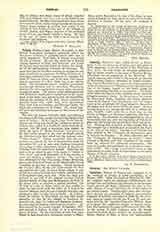

Cadalous, Bishop of Parma and antipope, b. in the territory of Verona of noble parentage; d. at Parma, 1072. After the death of Nicholas II, 1061, the cardinals, under the direction of Hildebrand, met in legal form and without any reference to the German Court, elected (September 30) Alexander II, who as Anselm, Bishop of Lucca, had been one of the leaders of the reform party. Twenty-eight days after Alexander‘s election an assembly of bishops and notables (enemies of reform), convoked at Basle by the Empress Agnes as regent for her son Henry IV, and presided over by the Imperial Chancellor Wibert, chose as antipope the ambitious prelate of Parma, Cadalous, who assumed the name of Honorius II (October 28). In the spring of 1062 Cadalous with his troops marched towards Rome, whither the imperial agent, Benzo, Bishop of Alba, a clever but unscrupulous man, had been sent in advance to prepare the way. On April 14 a brief but sanguinary conflict took place, in which the forces of Alexander were worsted and Cadalous got possession of the precincts of St. Peter’s. The arrival, however, of Godfrey, Duke of Tuscany, in May, forced the antipope to withdraw to Parma, Alexander II at the same time engaging to return to his see in Lucca, there to await the result of Godfrey’s mediation with the German Court.
In Germany, meanwhile, a revolution had taken place. Anno, the powerful Archbishop of Cologne, had seized the regency, and the Empress Agnes retired to the convent at Fructuaria in Piedmont. Having declared himself against Cadalous, the new regent at the Council of Augsburg, October, 1062, secured the appointment of an envoy to be sent to Rome for the purpose of investigating Alexander‘s election. The envoy, Burchard, Bishop of Halberstadt (Ann’s nephew), having pronounced favorably upon the election, Alexander II was recognized as the lawful pontiff, and his rival, Cadalous, excommunicated (1063). The antipope did not, however, abandon his claims. At a counter-synod held at Parma he hurled back the ban and having gathered about him an armed force, once more proceeded to Rome, where he established himself in the Castle of Sant’ Angelo and for more than a year defied the power of Alexander at the Lateran. His cause at length becoming hopeless he fled to his Bishopric of Parma. The Council of Mantua, Pentecost, 1064, practically ended the schism by anathematizing Cadalous and formally declaring Alexander II to be the legitimate successor of St. Peter. Cadalous, however, maintained his pretensions to the day of his death.
THOMAS OESTREICH

